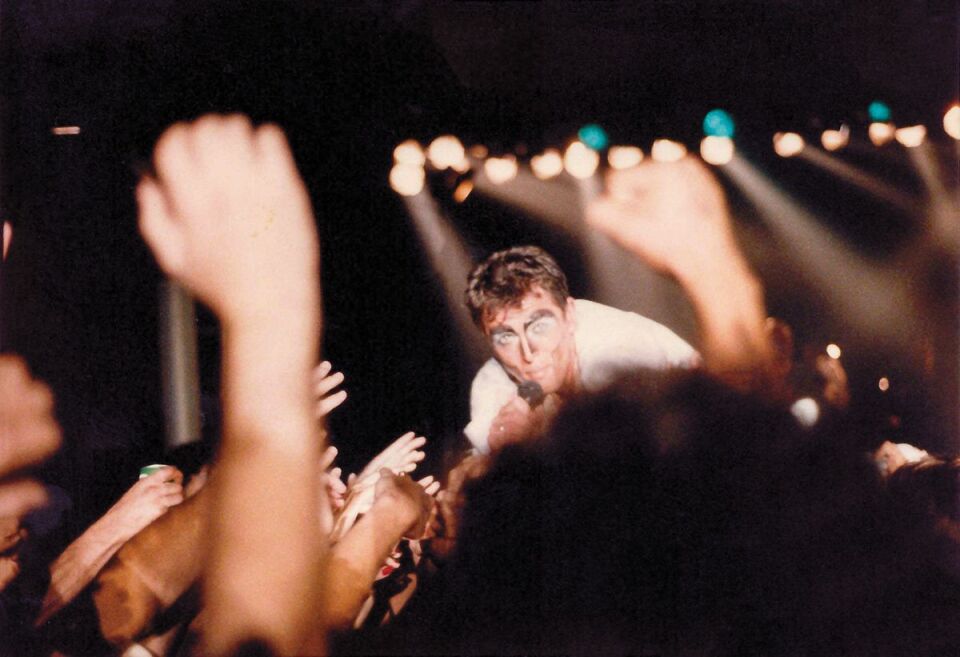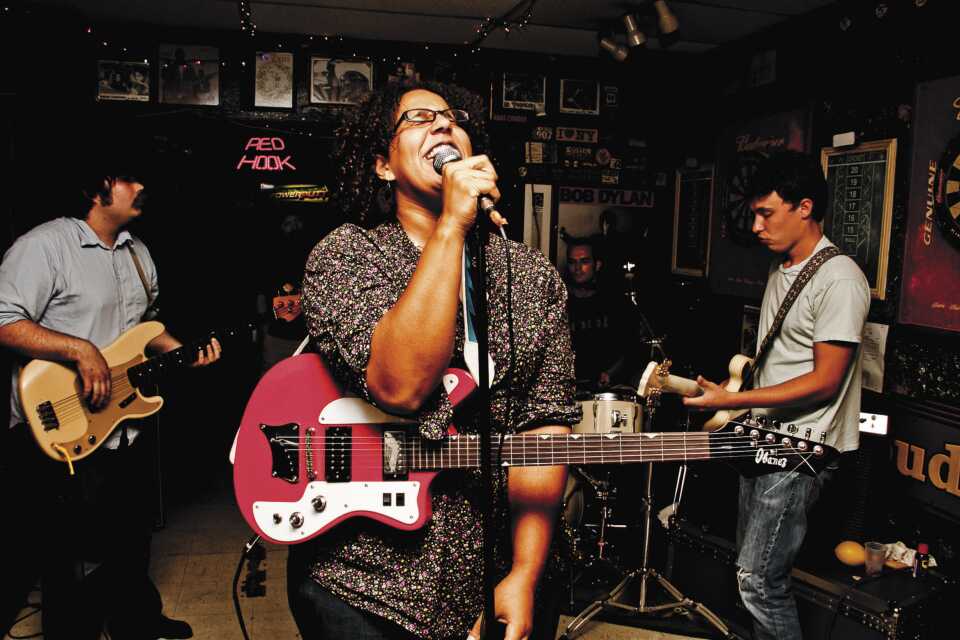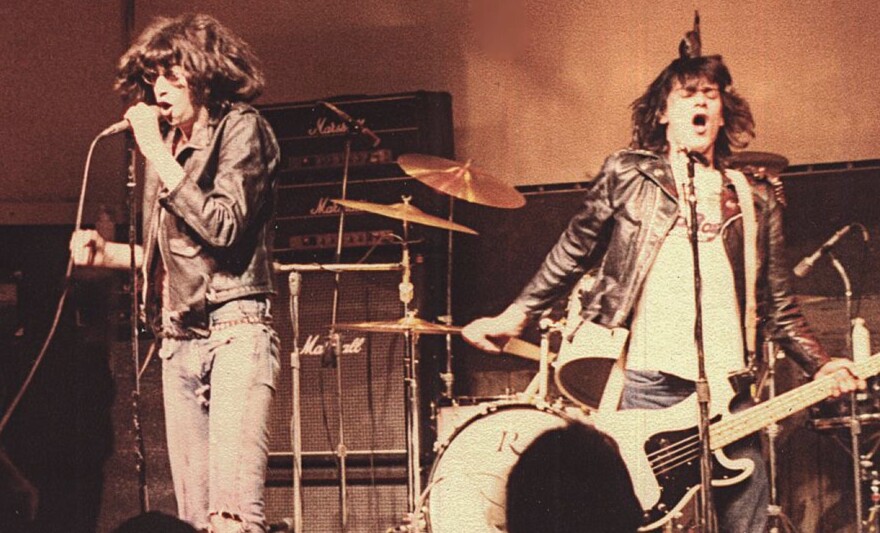Music industry veteran Bill Bentley pairs his stories with crowdsourced photos in “Smithsonian Rock and Roll: Live and Unseen”; the Weinstein Company is seeking buyers, but may not avoid bankruptcy; Rockabye Baby turns songs by artists like David Bowie, Rihanna and Coldplay into kid-friendly lullabies.
How Rockabye Baby transforms Metallica and Black Sabbath songs into lullabies
Music for kids isn’t often made with the enjoyment of grown-ups in mind.
Lullabies, in particular, are designed for a pretty specific purpose — to wind down little ones and get them to sleep. But the L.A.-based label, Rockabye Baby, throws another consideration into the mix: is this a tune that a music-loving mom or dad could get a kick out of?
Using xylophones, wood blocks and other acoustic instruments, Rockabye Baby producers Andrew Bissell, Steven Boone and Leo Flynn transform songs by artists like The Beatles, David Bowie, Rihanna and Eminem into baby-friendly lullabies.
Rockabye Baby is the brainchild of Lisa Roth. She's the vice president and creative director of CMH Label Group and the executive producer of Rockabye Baby.
"I was shopping for a baby shower gift for a friend who loved music and I didn't see anything out there that I was excited to give," Roth says. "I thought to myself, I think we can do something about this."
The label's first three releases were lullaby renditions of Radiohead, Coldplay and Metallica:
Artists like Metallica, Tool and Black Sabbath, maybe not surprisingly, are some of the most challenging for the producers to translate into lullabies.
"The most difficult aspect of the production process," Roth explains, "is taking an artist who doesn't have a lot of melody in their music, or [who uses] a lot of minor chords," which can sound a little scary or unsettling, and turning them into a soothing, cute lullaby.
Roth says a song like Beyonce's "Hold Up," which contains a pretty melody, is an example of the opposite. With that one,"we weren't pulling as many tricks out of our sleeves":
One of Roth's favorites is the lullaby version of James Brown's "Get Up Offa That Thing." Roth says, "there's something about that one that makes me laugh every time I hear it." Some of the fun factor also comes from the use of cute little sound effects like frogs croaking or whistles blowing (gently):
But apart from just entertaining babies and their parents, Roth also sees another value to the Rockabye Baby catalog of songs.
"Very often I think new parents feel like they have to put aspects of their previous lives temporarily on the back burner," Roth says. "I like to think that Rockabye Baby provides an element of that previous life that's now baby-approved."
'Smithsonian Rock 'n' Roll': Every picture tells a story, don't it?
Rock 'n' roll has evolved to include a lot of different styles. But according to Bill Bentley — a former executive at the Concord and Warner Bros. record labels — rock 'n' roll is less of a specific genre and more a state of mind.
So when the folks at the Smithsonian asked him to create a photo collection around the history of rock, he was eager to take on the task.
“Smithsonian Rock and Roll: Live and Unseen” was compiled from thousands of photos submitted by fans and professional photographers. But it's Bentley’s prose that connects the dots between 142 of the most influential rock artists of the past six decades.
Bentley recently spoke with The Frame's John Horn.
Interview Highlights:
On whether the the book is an objective look at rock 'n' roll history or a product of his personal experiences in the music industry:
When we started making the list of artists that were going to be in it, I had about 200 [artists]. The Smithsonian people said, for the size that the book can be, that's too many. So I had to start taking them out. Then they started telling me that there's a lot of bands that were hugely influential in the development in rock 'n' roll that [weren't] on my list. And I said, Let's do what we're all supposed to do in life — compromise, right?
I think at its core, it's my taste. But being open to their suggestions made the book a little bit of a "them and me" type of collection. The people I know who go through [the book] and aren't serious music heads, they tell me they like it because they discover a lot of bands they had never heard of. That's the basis of the music business. We find bands and put them out there for people to hopefully buy.

On how he defines rock 'n' roll:
I went back to my very early youth in Texas. I was born there in 1950. Some of the first artists I saw when I was a kid, [performing] on the street, were people like Lightnin' Hopkins and Juke Boy Bonner — blues people. Then when Elvis hit in '55 or '56, you heard right away — even though I was six years old — what he had taken from those blues people. So I always defined rock 'n' roll as sort of a spirit more than a certain genre. Really and truly, so many rock 'n' roll fans will listen to jazz, will listen to hip-hop, will listen to blues, so I never wanted to narrowly define it because I think when you do that, you lose the opportunity to be open to new things. There's a lot of quibbles like, What is rock 'n' roll? To me, it's that thing that just sets your spirit on fire and really sets you free. When you're really into the rock 'n' roll experience, you are a different person ... So to me, you can bring in Al Green or Run DMC or anybody, just as long as it contributes to that spiritual elevation of what great music does to you.
On how Fats Domino helped define rock 'n' roll:
I think one of the ways Fats Domino influenced everybody — I mean, The Beatles were among his biggest fans — was that he had a rock 'n' roll beat that almost defined what rock 'n' roll sounded like at its core. But it was just the style of music that young people gravitated to, no matter what race they were. That was the beauty of early rock 'n' roll too, if you think about it. It was the music that crossed the color lines of African-Americans and whites — anybody could relate to rock 'n' roll and it brought those people together.

On what makes a good rock 'n' roll photograph:
When I'm looking at rock 'n' roll photographs that really excite me, I like ones that evoke what the live experience was like, or what listening to the music is like, and really captures the passion and the emotional side of music. We listen with our ears and our eyes because when I see a picture, it brings to mind the same feelings I get when I listen to music. In the pictures we tried to choose those that brought those really edgy feelings of when music has taken over your body and your soul and takes you to a different place. When you look through the book, you feel almost that you're at a concert or you feel like you're listening to one of the songs.
On what the Velvet Underground symbolized:
I worked with Lou Reed for 25 years and we got to be very close. He's probably the best friend I ever made on the music side. He used to tell me, when he started writing songs, he would be reading novels by William S. Burroughs or especially Raymond Chandler. He wanted to be able to write about the things that those novels talked about, which at the time in rock 'n' roll wasn't happening. I mean, Lou wrote about homosexuality, drug addiction, sadomasochism — everything. And the way [The Velvet Underground] played it, they brought in drones and lots of feedback and tribal drumming. So a band like that, they changed rock 'n' roll completely even though they weren't very popular. To me that's one of the great delights of rock 'n' roll, is finding bands like that who were so influential, but if you step out of a certain sphere, nobody's ever heard of them.

On Alabama Shakes' "Don't Wanna Fight" as a modern example of rock music:
I think there is a straight line from the start of rock 'n' roll to the Alabama Shakes. Rock 'n' roll was born out of the collision of country and blues, electrified to the max. I believe what the true beauty of the Alabama Shakes is, they come out of Alabama, so you know they're in the heart of where so many great rock 'n' roll artists were born and thrived. They brought to it a rawness that is at the heart of what all great rock 'n' roll starts as. That song in particular could have been from any era of music and it's one of those songs that gets inside of you and inspires you to know that, not only is life going to be okay, it's going to be great.




